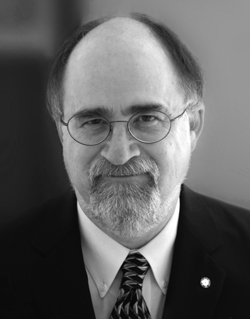A Secular Sangha
Printed in the Fall 2024 issue of Quest magazine.
Citation: Trull, David, "A Secular Sangha" Quest 112:4, pg 17-19
By David Trull
 Every Sunday growing up, I walked to Catholic church with my family. On the way, we passed a Masonic temple. It was made of glittering white stone, and over the entrance hung a strange symbol that often caught my eye: a compass with what looked like a face in the middle. When I asked my parents what went on there, they shrugged. When I pressed further, my Dad said, “Some people say mysterious rituals, but I think it’s mostly just spaghetti dinners and canned-goods drives.”
Every Sunday growing up, I walked to Catholic church with my family. On the way, we passed a Masonic temple. It was made of glittering white stone, and over the entrance hung a strange symbol that often caught my eye: a compass with what looked like a face in the middle. When I asked my parents what went on there, they shrugged. When I pressed further, my Dad said, “Some people say mysterious rituals, but I think it’s mostly just spaghetti dinners and canned-goods drives.”
At the start of summer, our church hosted a carnival, kicked off by a raucous parade. As a little kid, I would join my siblings, who would rush out in bare feet and watch as the cars full of marching bands and pickup trucks decked in streamers blared past.
Our favorite part was the fleet of minicars, piloted by old guys in Vietnam vet or Navy baseball caps. They would zip between the floats and toss out Tootsie Rolls. When I asked who the heck those guys were, my mom told me they were Shriners and were part of the Masonic temple. I wasn’t sure how to reconcile the silly cars and Tootsie Rolls with that imposing edifice.
I later learned that Freemasonry grew out of the crafts guilds formed in the 1500s. While initially intended to facilitate and regulate the practice of stonemasonry, over time it transcended its initial function and became a fraternal order dedicated to service and self-improvement. Members advance through three degrees, which mirror the ranks of a craftsman: Apprentice, Fellowcraft, and Master Mason.
Freemasons keep their rituals and teachings secret, but their public face is one of community service. They often fund and run children’s hospitals and burn units. Although I came across plenty of online chatter about bizarre rituals and schemes for world domination, it seems much of this talk stems from works of fantasy like Dan Brown’s novel The Lost Symbol. There is nothing people love more than a secret society to blame for all the world’s problems, I suppose.
The Masons and their communal self-improvement efforts came to mind when I read the book Bowling Alone: The Collapse and Revival of American Community, by Robert Putnam, while living in a Tibetan Buddhist community. Bowling Alone, published in 2000, traces the decline of American social capital since the 1950s (an era of robust civic and social participation). The book describes how Americans once filled their free time with bowling leagues, public clubs like Elks Lodges and the Freemasons, church and charity organizations, and informal gatherings like Sunday dinners or poker nights. It asserts that this civic and neighborhood participation cements social ties, fosters a safe and trusting society, and facilitates generational transfer. To the cosmopolitan eye, church bake sales and Elks Club suppers might appear painfully provincial, but they are the brick and mortar of society, Putnam insists.
I couldn’t help but feel that Putnam had a point. My formative years unfolded over a strange period in history: born early enough to experience the last gasp of the postwar American high, ripe with community and togetherness, and late enough to watch that wave recede from shore. When I was small, our neighborhood was vibrant and active, we knew many of our neighbors, and there was a palpable sense of local pride. By the time I left for college, however, the local church had closed, the parades were no more, the Shriners and their wacky cars had vanished, and people were becoming enamored with novel online communities like Facebook and MySpace. The whole nation felt sadder and more pointless, just a collection of houses, their windows flickering with TV light.
At the time I was reflecting on this, I was introduced to the concepts of Buddha, Dharma, and Sangha. Buddha is the teacher, Dharma the teachings, and Sangha the community of Buddhist practitioners. The rinpoche (meaning precious one, an honorific name for a lama) under whom I studied placed special emphasis on Sangha. Even within a tradition as focused on the individual mind as Buddhism, he said, participation in a community oriented toward enlightenment was critical.
This came as a bit of shock, as I had sought out Buddhism during a somewhat misanthropic stage of my life. I had become fed up with the rat race and had grown pessimistic about the possibilities of friendship and relationships, which seemed to lead only to trouble and disappointment. When I told Rinpoche that I felt I needed less community, not more, he told me that Sangha is the antidote for individualism. Too much focus on the self, even when well-intentioned, engenders suffering. More pain awaited me, he warned, if I sought to make myself an island.
Long story short: I ultimately learned the lesson Rinpoche meant to teach, first through a Buddhist Sangha and then through a circle of new friends. The experience humbled me and showed me the inestimable value of simple togetherness. I could not spend my life alone in meditation or esoteric ritual and expect to find happiness. That was part of it, but I needed others to serve and be served by.
Though they are not Buddhist, I realized that organizations like the Freemasons offer a form of secular Sangha. One of the Mason mottos is, “Making good men better,” as succinct a summary of Sangha as you are likely to find. It leaves room for individual effort (it implies one must be a “good man” to begin with: it does not promise to build one from scratch) yet acknowledges that personal and spiritual growth requires mutual support and a community in which to serve.
While most of the social clubs and community organizations described in Bowling Alone have withered and died, the Masons have demonstrated a particular resilience (they currently have six million members worldwide) that makes me think they will survive (and perhaps thrive) in the years ahead. One reason, I think, is that they incorporate a greater spiritual depth than organizations like the Elks Lodge, but another reason is that they carefully thread the needle between modern and premodern wisdom in two ways.
First, belief in a higher power is a precondition for membership. The applicant does not have to believe in a specific manifestation of God (Jesus or Allah), but the door is closed to atheists. While Freemasonry is modern (or even postmodern) in its flexibility as to the particular form of the higher power, it harks back to an earlier age in insisting that there is something beyond us and the harsh gaze of scientific reductionism. The toughest stretch of my spiritual path came when I realized that I could not live without God. Sure, I could do without the angry, shaming patriarch of my traditional Catholic upbringing and the vanilla prosperity gospel God of the megachurches, but I required something beyond myself, a force driving evolution that offers me a role in its unfolding. The Masons understand that we cannot just “move on” from God.
Second: male-only membership. It feels almost dirty, in these postmodern times, to mention a rule like this. Everything ought to be open to all genders, we profess. While I would almost always agree with this, I think it is wise to recognize the value of single-sex spaces. After all, we observe the polarity of masculine and feminine at work in the unfolding of the universe: how can we deny these forces exist? And if these are polarized powers, perhaps they need space to grow and replenish away from the pressure of their opposite. It is a heartbreaking phenomenon of our time that even a hint of male-oriented spirituality is considered inherently toxic and cancerous, something to snuff out.
While the limitations of the old paradigm are clear, I think we, in our haste, stand to lose much of what was good in the traditional paradigm. The Masons are not afraid to incorporate aspects of the traditional worldview into their modern pursuits while refusing to engage in the destructive “us versus them” arguments so common in the past, and I think this is a sterling example that other spiritual communities should follow. Freemasonry is about becoming better humans, not about feeling better by shoving others out of the circle.
This capacity for integration makes me wonder if the Freemasons, although they have ancient roots, might serve as a model for the type of Sangha we ought to form in this “time between worlds,” as educational theorist Zak Stein calls it. We are bidding farewell to a universe governed by traditional religion and hierarchy and stepping into an uncertain spiritual future. The journey will be painful and the end result unclear. To ease the agony of transition, one of our most urgent tasks is to construct communities of practice in which we can collectively level up.
To be alive now is oftentimes to be lonely. We are either competing against others for scarce resources or fighting for dominance in the space of ideas, struggling for the right to dictate the new paradigm. Much public rhetoric now revolves around crushing the “enemy,” whoever that might be. Self-development often appeals to selfishness (“make tons of money and leave the losers in the dust”) and nets handsome profits for those who peddle it. There is little sense that we are in this thing together, or that we need each other, and the glaring absence of community only exacerbates this feeling. It is unclear where we are meant to go, and whom we should go there with. We need sangha now more than ever.
The Freemason motto is “Ordo ab chao,” Latin for “Order from chaos.” In the beginning, this applied to stonemasons as they laid a foundation and transformed a pile of bricks into a home or a church; now it applies to society. How to bring order from chaos? Service, commitment to self-improvement, and community. While spiritual quests and lofty philosophy hold wild appeal (and the Masons have that too), I’ve come to realize that without Sangha, they are insufficient. To build something that will last, something that will stand, we need the esoteric things, of course, but beforehand, the foundation must be laid, sometimes with things as simple as spaghetti dinners and canned-goods drives.
David Trull has worked as a fireworks salesman, forensic tax researcher, railroad logistician, teacher, songwriter, and musician. He studied philosophy through a Great Books immersion program at Thomas Aquinas College in Ojai, California. A lifelong autodidact, he has advanced his explorations through a self-designed curriculum focused on the intersection of philosophy and theology. Raised in St. Louis, Trull now orbits between Santa Barbara, California, and the San Francisco Bay Area.


 Richard Smoley: What were your first impressions of Masonry, going back to childhood?
Richard Smoley: What were your first impressions of Masonry, going back to childhood?